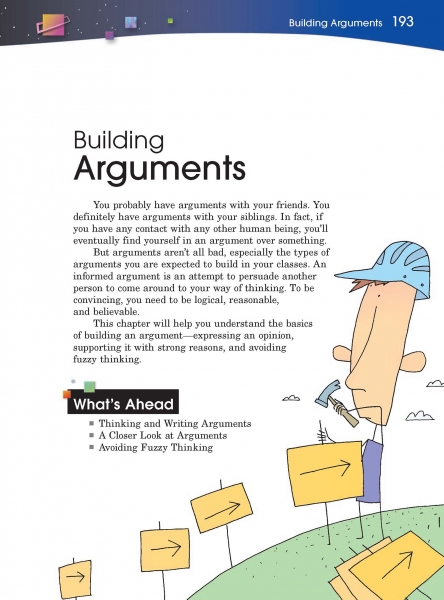Page 193 from

Start-Up Activity
Ask for volunteers to role-play an argument between a baseball player and an umpire who has just called the player "out" when sliding in to home plate. If your two volunteers are like most middle schoolers, they will act out a yelling match. If they do, stop them after a time and ask the class what they are observing. Is either side persuading the other? Or are they digging in all the more?
Now ask your volunteers to calmly discuss the play, each trying to persuade the other using logic and sound reasons. Afterward, ask the class to explain the differences between the yelling-match argument and the other one. Stress that you want them to use the second approach to making arguments in class, not the yelling approach. This chapter will show them how.
Think About It
“The thing I hate about an argument is that it always interrupts a discussion.”
—G. K. Chesterton

Start-Up Activity
Ask for volunteers to role-play an argument between a baseball player and an umpire who has just called the player "out" when sliding in to home plate. If your two volunteers are like most middle schoolers, they will act out a yelling match. If they do, stop them after a time and ask the class what they are observing. Is either side persuading the other? Or are they digging in all the more?
Now ask your volunteers to calmly discuss the play, each trying to persuade the other using logic and sound reasons. Afterward, ask the class to explain the differences between the yelling-match argument and the other one. Stress that you want them to use the second approach to making arguments in class, not the yelling approach. This chapter will show them how.
Think About It
“The thing I hate about an argument is that it always interrupts a discussion.”
—G. K. Chesterton